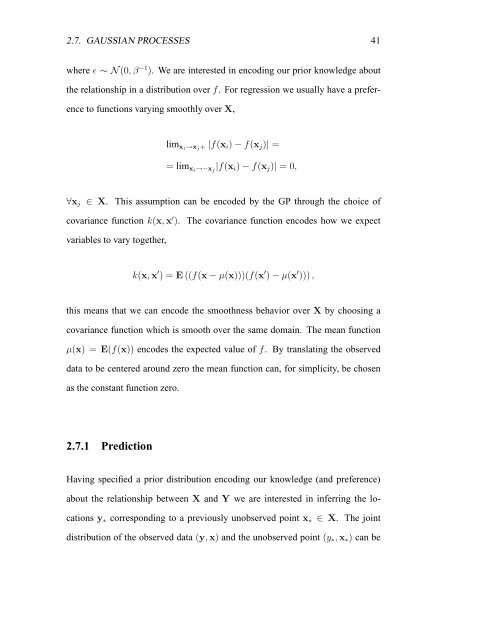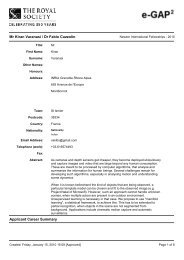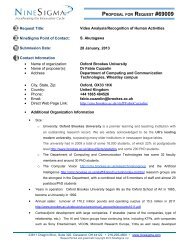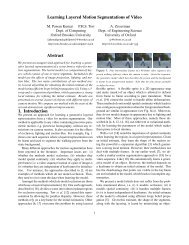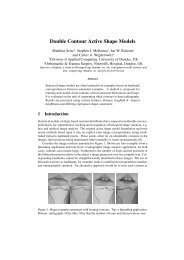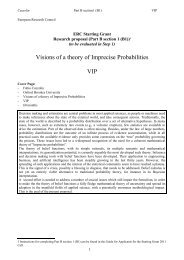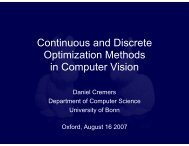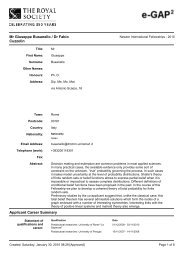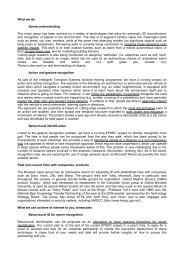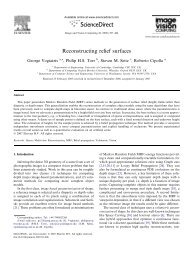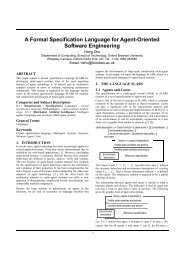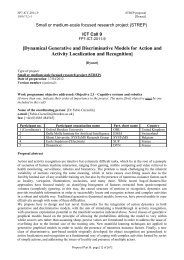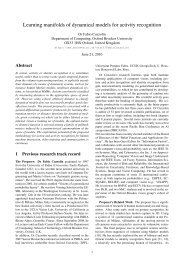Shared Gaussian Process Latent Variables Models - Oxford Brookes ...
Shared Gaussian Process Latent Variables Models - Oxford Brookes ...
Shared Gaussian Process Latent Variables Models - Oxford Brookes ...
Create successful ePaper yourself
Turn your PDF publications into a flip-book with our unique Google optimized e-Paper software.
2.7. GAUSSIAN PROCESSES 41<br />
where ǫ ∼ N(0, β −1 ). We are interested in encoding our prior knowledge about<br />
the relationship in a distribution over f. For regression we usually have a prefer-<br />
ence to functions varying smoothly over X,<br />
limxi→xj+ |f(xi) − f(xj)| =<br />
= limxi→−xj |f(xi) − f(xj)| = 0,<br />
∀xj ∈ X. This assumption can be encoded by the GP through the choice of<br />
covariance function k(x,x ′ ). The covariance function encodes how we expect<br />
variables to vary together,<br />
k(x,x ′ ) = E ((f(x − µ(x)))(f(x ′ ) − µ(x ′ ))),<br />
this means that we can encode the smoothness behavior over X by choosing a<br />
covariance function which is smooth over the same domain. The mean function<br />
µ(x) = E(f(x)) encodes the expected value of f. By translating the observed<br />
data to be centered around zero the mean function can, for simplicity, be chosen<br />
as the constant function zero.<br />
2.7.1 Prediction<br />
Having specified a prior distribution encoding our knowledge (and preference)<br />
about the relationship between X and Y we are interested in inferring the lo-<br />
cations y∗ corresponding to a previously unobserved point x∗ ∈ X. The joint<br />
distribution of the observed data (y,x) and the unobserved point (y∗,x∗) can be


